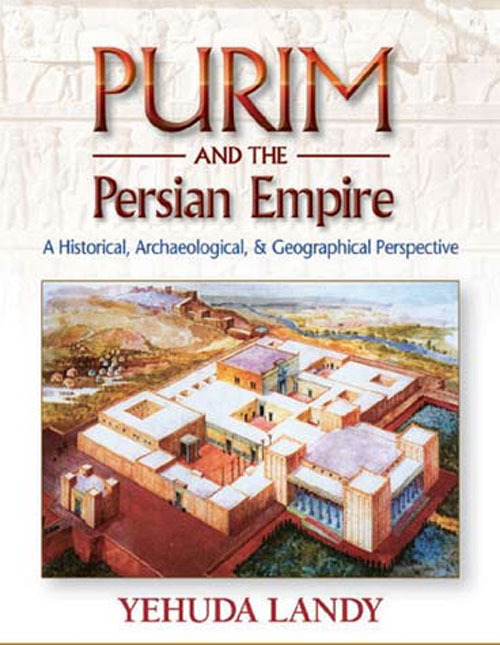The Kosher Bookworm: ‘Purim and the Persian Empire’ by Rabbi Yehuda Landy
The Kosher Bookworm
By Alan Jay Gerber
Issue of February 19, 2010/ 6 Adar 5770With the joyous holiday of Purim just one short week away, our annual commemoration of the events described in Megillat Esther is marked by the publication of a new book that authenticates the events of yore. A picturesque and detailed text brings to life the events and personalities of that long-ago era.‘Purim and the Persian Empire’ [Feldheim, 2010] by Rabbi Yehuda Landy, presents a colorful, historical, archaeological and geographical treatment of a holiday that other, less-traditional scholars treat with disdain. To those who question Purim’s historical veracity, Rabbi Landy’s work seeks to prove in great detail that the events described in the Megillah do have a legitimate historical basis and can be proven through the tools of modern scholarship.
Rabbi Landy, a Talmid Chochom of the highest order, has taught in several yeshivot in Israel that cater to American high school graduates. He is also a sought-after guide for tours around Israel and of the Near East collections of a number of world famous museums, including the British Museum and the Louvre. HHHis ‘Tanach Tour’ of the Metropolitan Museum of Art in New York City was the subject of a previous article in The Jewish Star.
Rabbi Landy brings us a volume studded with colorful pictures, maps and charts that seek to relate the Megillah’s narrative utilizing photographs of geographic sites, archaeological evidence, and artistic works and sculpture. It lends great realism to the story told in the pages of the Megillah.
Rabbi Landy’s text underscores his premise: the Purim story reflects actual events; a major miracle that we recognize in gratitude to this very day.
Nevertheless, Rabbi Landy, in his foreword, gives us a somber and sober word of caution. “The purpose of this book is not to authenticate the Megillah and/or the Midrashim of Chazal,” Rabbi Landy states. “Nor is this book meant to resolve any halachic issues. It is meant as a tool for understanding and visualizing the events of the Megillah.”
“Nonetheless, a word of caution is necessary,” he adds. “Archaeology is not an exact science. Things are constantly changing. New discoveries and advanced methods of research often cause scholars to change or modify their conclusions. It is thus possible that some of the ideas expressed in this book will not necessarily be accepted later on.”
This frank admission gives the book an intellectual honesty absent in previous works by others who sought, through the use of fancy graphics, to present a pseudo-authenticity that in reality was a bells-and-whistles version of our sacred writ.
The author’s use of other texts, including references to numerous non-Jewish scholarly sources and museums that the average yeshiva would avoid in class trips, is both laudable and commendable. This reaching out to those sources, a methodology pioneered by Rabbi J.H. Hertz zt”l, regardless of their religious origin, gives this book a greater credibility, and the story of the Purim miracle that much more believability to those modern day doubters among us.
To place the above in its proper historical perspective, let’s conclude with the words of another great Jewish historian, Rabbi Zechariah Fendel. In his work, “Purim: Season of Miracles,” he states:
“Because of the boisterous and jocular nature of Purim, and because of the levity with which the day is celebrated, we often tend to forget that it is a Yom Tov which contains a wealth of Hashkafa insights for the Jewish People of all generations.”
“This is particularly true of our generation, when the Purim message is one of high priority, and even a sense of urgency, beset as we are with high tension and trepidation concerning the ever growing anti-Semitic tendency in today’s world.”
Rabbi Landy’s and Rabbi Fendel’s powerful and beautiful works, taken together, will give you some valuable insights that will further enrich your appreciation of the Purim holiday.
Next week, The Kosher Bookworm will explore the work of Dr. Yonatan Grossman of Bar-Ilan and Yeshivat Har Etzion via his commentary on The Book of Esther. For a heads up on this unique work I strongly urge you to check out his web site, www.vbm-torah.org/ester.html . I hope to also feature the work of Chaim Gross, whose book, “Nissim V’Niflaos,” brings us commentary based upon the Purim teachings of Rabbi Don Blumberg.

 55.0°,
Fog/Mist
55.0°,
Fog/Mist 




